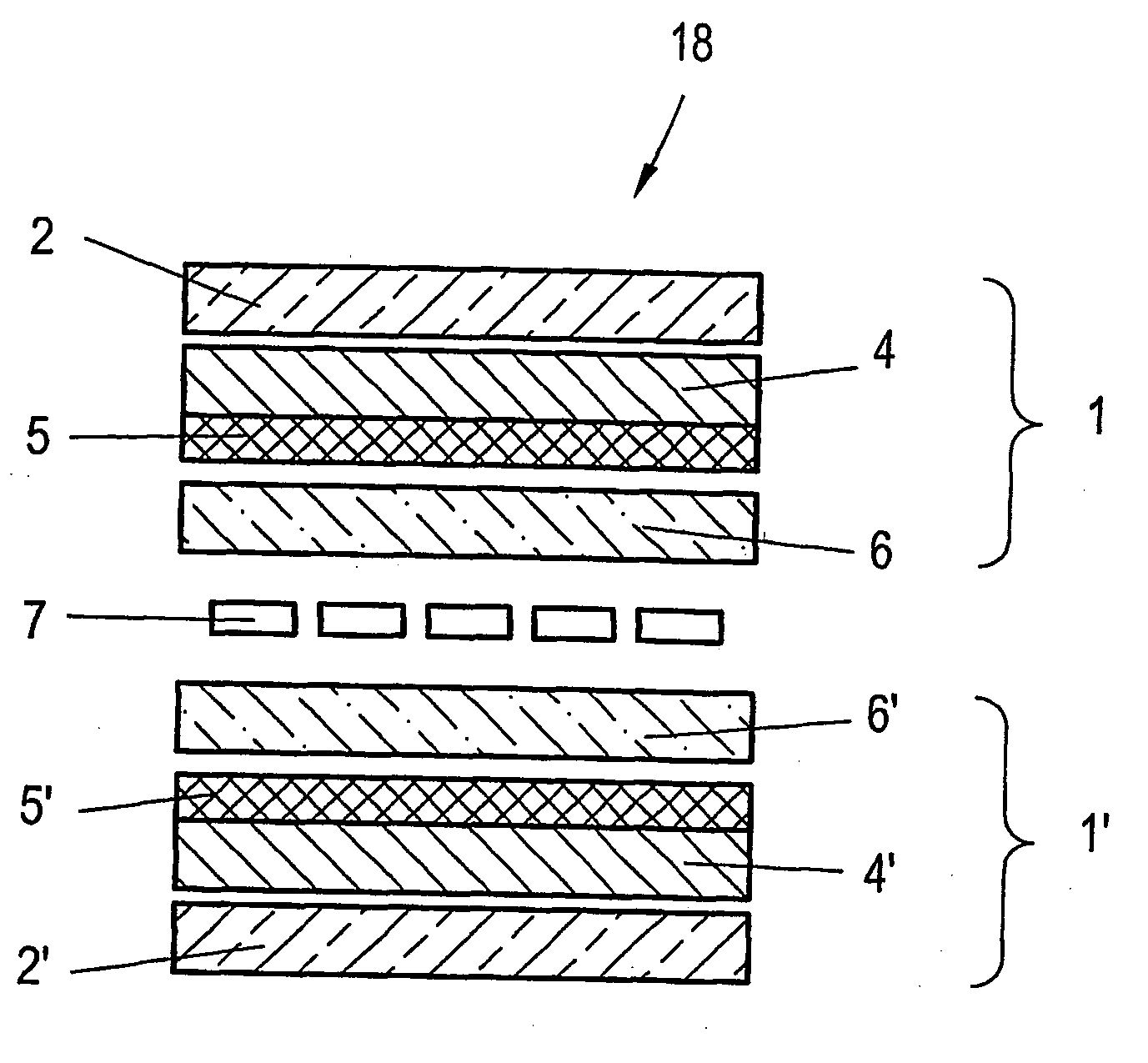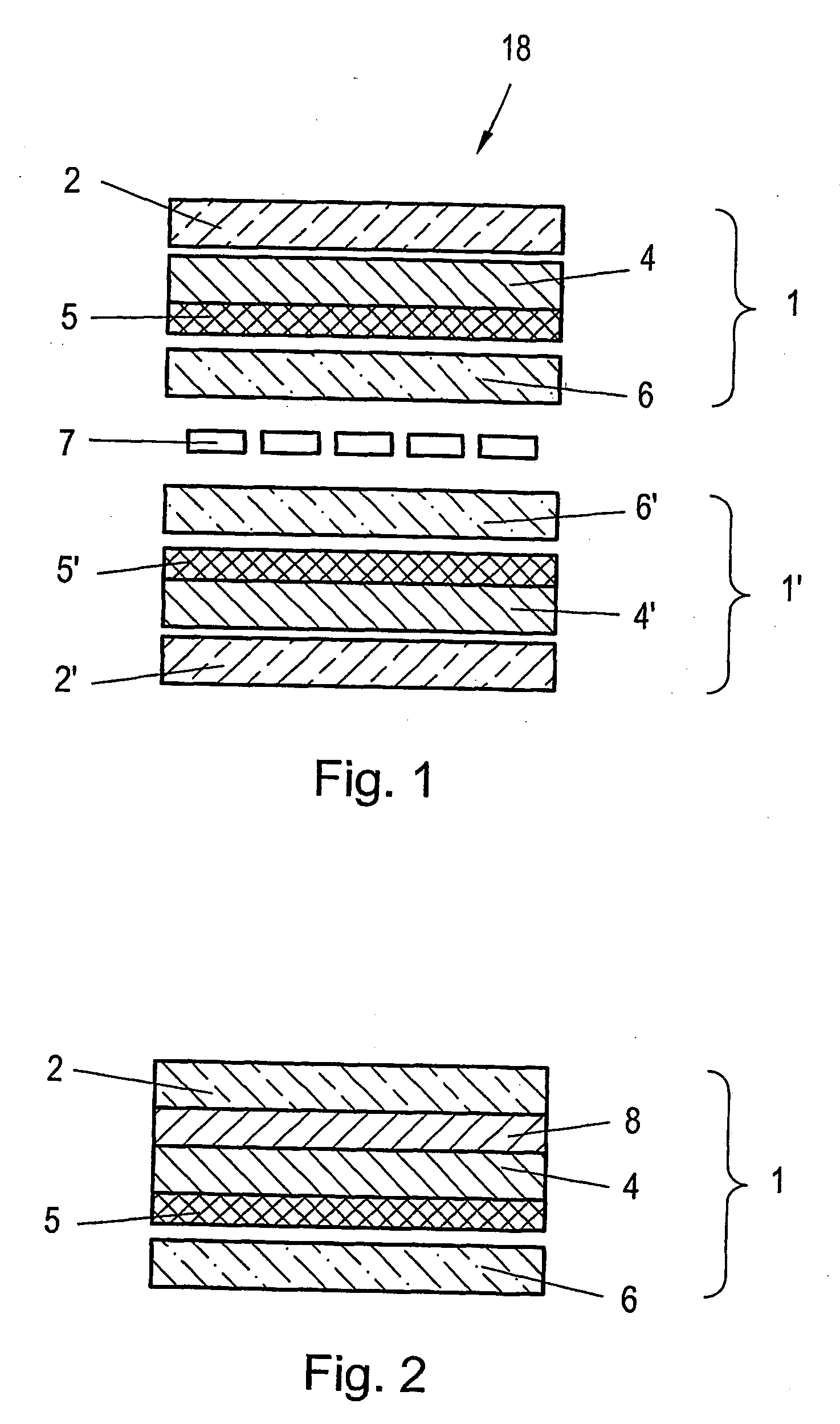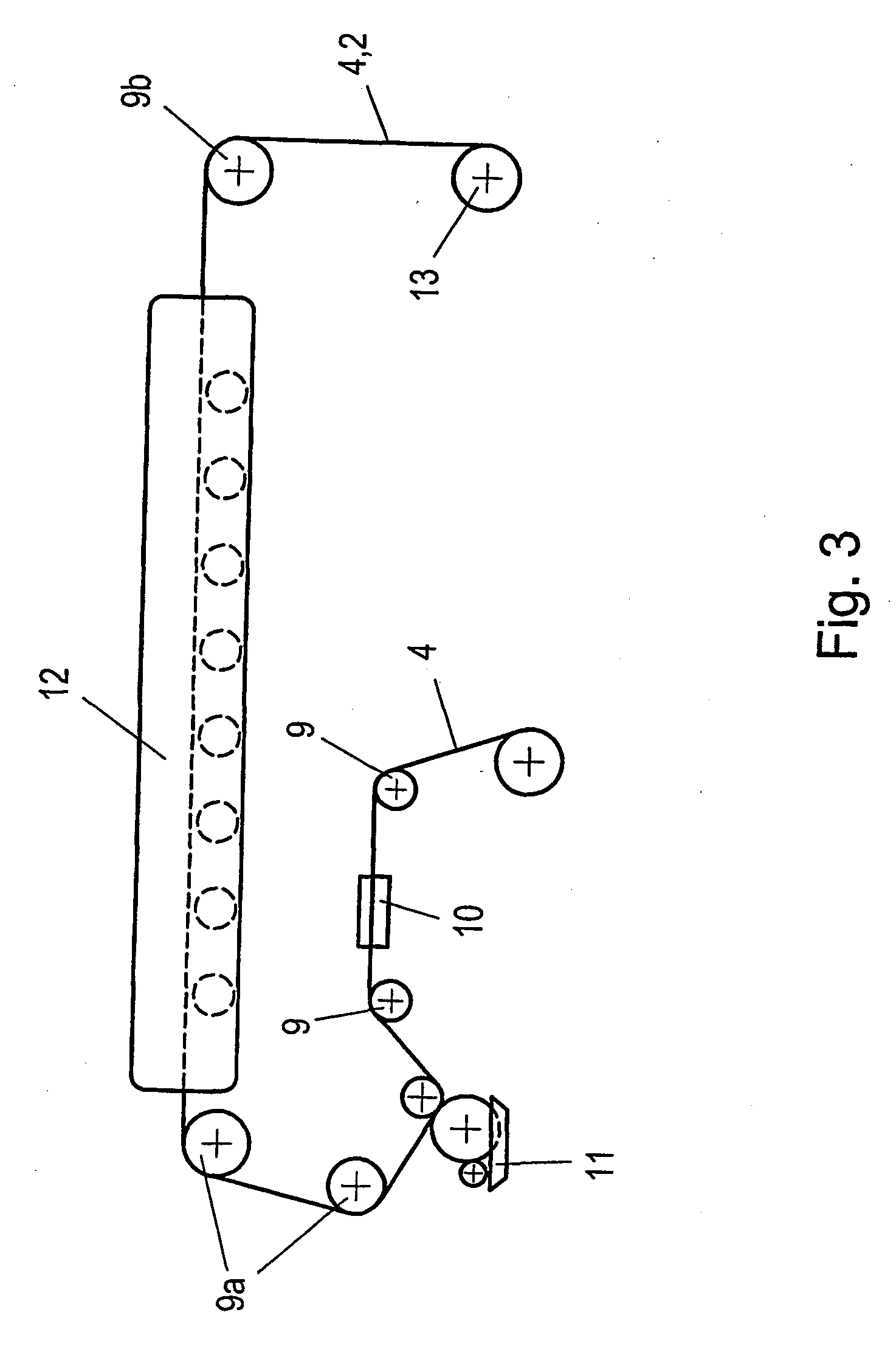Method for Producing Weather-Resistant Laminates for Encapsulating Solar Cell Systems
a solar cell and solar cell technology, applied in the field of weather-resistant laminate production, can solve the problems of high cost and energy-intensive processes, and achieve the effect of satisfactory weather resistance for outside use and economics in terms of energy
- Summary
- Abstract
- Description
- Claims
- Application Information
AI Technical Summary
Benefits of technology
Problems solved by technology
Method used
Image
Examples
example a
)
[0020]Weather-resistant layer 2, 2′: selectively soluble fluoropolymers or fluoro-copolymers, acrylates, polyurethanes, silicones and mixtures thereof for the direct coating on the carrier materials 4, 4′:
[0021]Adhesive layer 3, 3′: polyurethane, polyester;
[0022]Carrier material 4, 4′: polyethylene terephthalate (PET), polyethylene naphthenate (PEN), ethylene tetrafluoroethylene copolymer (ETFE), as well as co-extrudates therefrom in the form of films or laminates, aluminum foils in various thicknesses;
[0023]Adhesion layer 5, 5′: polyurethane, polyacrylate or surface-treated fluoropolymer layer;
[0024]Sealing layer 6, 6′: ethylene vinyl acetate (EVA), polyvinyl butyral (PVB), ionomers, polymethyl methacrylate (PMMA), polyurethane, polyester or hot melt.
example b
)
[0025]Weather-resistant layer 2, 2′: selectively soluble fluoropolymers or fluoro-copolymers, acrylates, polyurethanes, silicones, as well as mixtures therefrom for the direct coating on pretreated carrier materials 4, 4′;
[0026]Carrier material 4, 4′: polyethylene terephthalate (PET), polyethylene naphthenate (PEN), ethylene tetrafluoroethylene copolymer (ETFE) as well as co-extrudates therefrom in the form of films or laminates, aluminum foils in various thicknesses;
[0027]Adhesion layer 5, 5′: polyurethane, polyacrylate or surface-treated fluoropolymer layer;
[0028]Sealing layer 6, 6′: ethylene vinyl acetate (EVA), polyvinyl butyral (PVB), ionomers, polymethyl methacrylate (PMMA), polyurethane, polyester or hot melt.
example c
)
[0029]Weather-resistant layer 2, 2′: selectively soluble / dispersible fluoropolymers or fluoro-copolymers, with a melting point below the laminating temperature for the direct coating on the carrier materials 4, 4′;
[0030]Adhesive layer: polyurethane, polyester;
[0031]Carrier material 4, 4′: polyethylene terephthalate (PET), polyethylene naphthenate (PEN), ethylene tetrafluoroethylene copolymer (ETFE) as well as co-extrudates therefrom in the form of films or laminates, aluminum foils in various thicknesses;
[0032]Adhesion layer 5, 5′: polyurethane, polyacrylate or surface-treated fluoropolymer layer;
[0033]Sealing layer 6, 6′: ethylene vinyl acetate (EVA), polyvinyl butyral (PVB), ionomers, polymethyl methacrylate (PMMA), polyurethane, polyester or hot melt.
PUM
| Property | Measurement | Unit |
|---|---|---|
| temperature | aaaaa | aaaaa |
| temperature | aaaaa | aaaaa |
| thickness | aaaaa | aaaaa |
Abstract
Description
Claims
Application Information
 Login to View More
Login to View More - R&D
- Intellectual Property
- Life Sciences
- Materials
- Tech Scout
- Unparalleled Data Quality
- Higher Quality Content
- 60% Fewer Hallucinations
Browse by: Latest US Patents, China's latest patents, Technical Efficacy Thesaurus, Application Domain, Technology Topic, Popular Technical Reports.
© 2025 PatSnap. All rights reserved.Legal|Privacy policy|Modern Slavery Act Transparency Statement|Sitemap|About US| Contact US: help@patsnap.com



